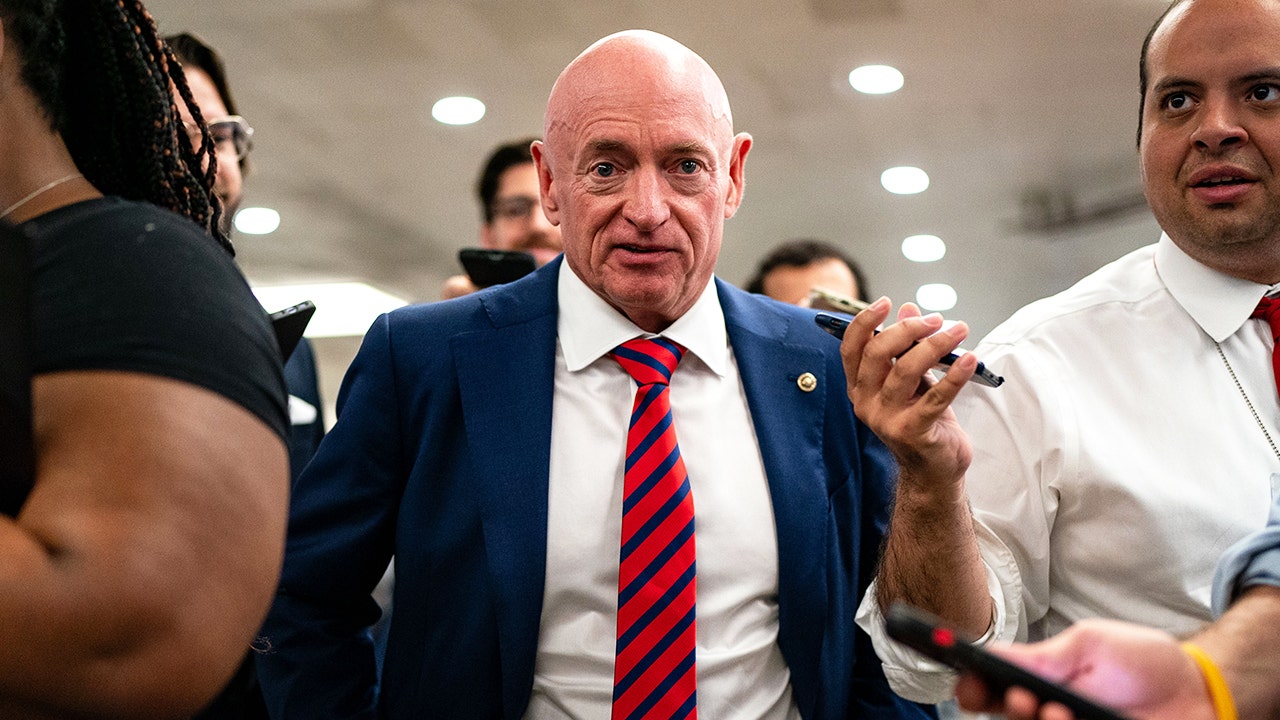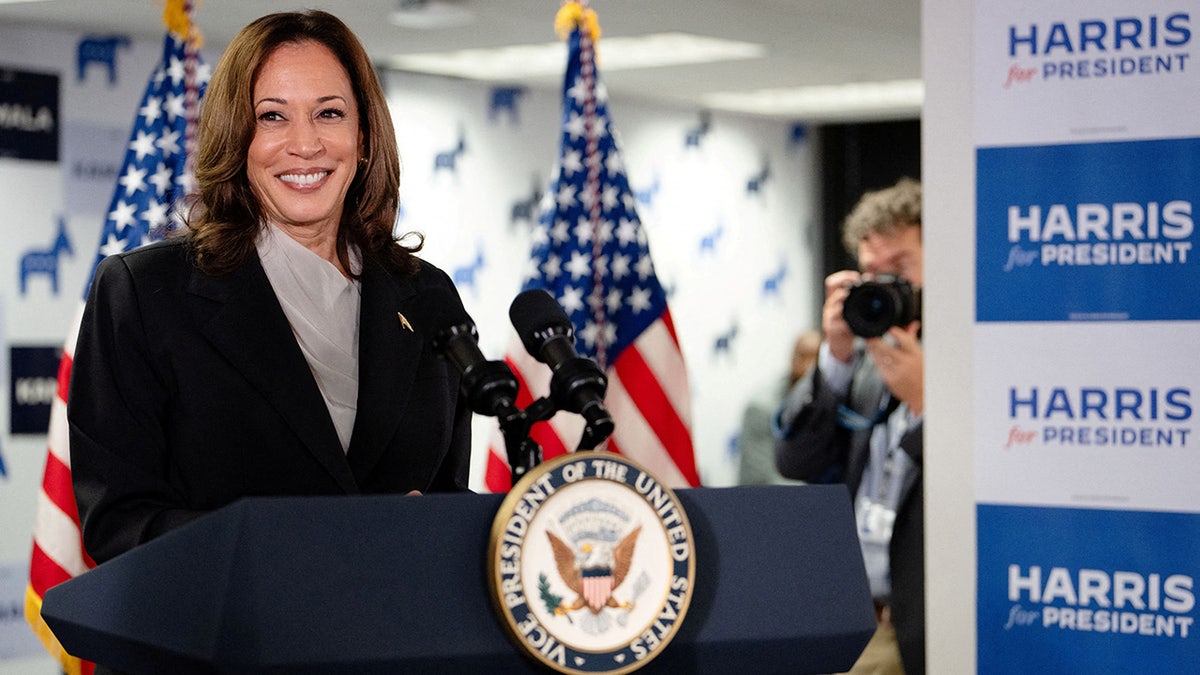Southwest
3 Native American tribes seeking rights to Colorado River water in $5B settlement

A proposed water rights settlement for three Native American tribes that carries a price tag larger than any such agreement enacted by Congress took a significant step forward late Monday with introduction in the Navajo Nation Council.
The Navajo Nation has one of the largest single outstanding claims in the Colorado River basin and will vote soon on the measure in a special session. It’s the first of many approvals — ending with Congress — that’s needed to finalize the deal.
Climate change, the coronavirus pandemic and demands on the river like those that have allowed Phoenix, Las Vegas and other desert cities to thrive pushed the tribes into settlement talks. The Navajo, Hopi and San Juan Southern Paiute tribes are hoping to close the deal quickly under a Democratic administration in Arizona and with Joe Biden as president.
PLUMBING PROBLEM AT GLEN CANYON DAM THREATENS WATER SUPPLY OF COLORADO RIVER SYSTEM
A landmark 1922 agreement divided the Colorado River basin water among seven western states but left out tribes. The tribes are seeking water from a mix of sources: the Colorado River, the Little Colorado River, aquifers and washes on tribal lands in northeastern Arizona.
Nearly one-third of homes on the Navajo Nation, which stretches across 27,000 square miles of Arizona, New Mexico and Utah, don’t have running water. Many homes on Hopi are similarly situated.
San Juan Southern Paiute will vote on the settlement within weeks, tribal President Robbin Preston Jr. said in an email. Along with guaranteed water deliveries, the tribe is asking Congress to approve a treaty it signed with the Navajo Nation in 2000 to establish an 8.4 square-mile reservation within the Navajo reservation.
A windmill draws water for livestock in Leupp, Arizona, on the Navajo Nation on March 9, 2024. A proposed water rights settlement for three Native American tribes that carries a price tag larger than any such agreement enacted by Congress took a significant step forward late on May 13, with introduction in the Navajo Nation Council. (AP Photo/Felicia Fonseca)
“We will have economic opportunities that our tribal members have never seen before, and which will give hope and pride to our people,” Preston said.
Without a settlement, the tribes would be at the mercy of courts. Already, the U.S. Supreme Court has ruled that the federal government is not bound by treaties with the Navajo Nation to secure water for the tribe. Navajo has the largest land base of any of the 574 federally recognized tribes and is second in population with more than 400,000 citizens.
A separate case that has played out over decades in Arizona over the Little Colorado River basin likely will result in far less water than the Navajo Nation says it needs because the tribe has to prove it has historically used the water. That’s hard to do when the tribe hasn’t had access to much of it, Navajo Attorney General Ethel Branch said.
Congress has enacted nearly three dozen tribal water rights settlements across the U.S. since 1978. Federal negotiation teams are working on another 22 settlements involving 34 tribes in nine states, the Interior Department said.
The costliest one enacted by Congress was for the Confederated Salish and Kootenai Tribes in Montana at $1.9 billion. The Navajo, Hopi and San Juan Southern Paiute tribes are seeking more than $5 billion in their settlement.
About $1.75 billion of that would fund a pipeline from Lake Powell, one of the two largest reservoirs in the Colorado River system, on the Arizona-Utah border. The settlement would require the U.S. Bureau of Reclamation to complete it by the end of 2040.
From there, water would be delivered to dozens of tribal communities in remote areas.
“Whatever funding we walk away with is funding we don’t otherwise have,” Branch said. “It will be a challenge.”
The Navajo Nation has settled its claims to the Colorado River basin in New Mexico and Utah. It’s separately pursuing two other much smaller settlements in New Mexico.
Arizona — situated in the Colorado River’s Lower Basin with California, Nevada and Mexico — is unique in that it also has an allocation in the Upper Basin. Under the settlement terms, Navajo and Hopi would get about 47,000 acre-feet in the Upper Basin — nearly the entire amount that was set aside for use at the Navajo Generating Station, a coal-fired power plant that shut down in late 2019. Navajo previously had agreed not to seek that water for the 50 years prior to 2019.
The proposal also includes a combined 9,500 acre-feet per year of water from the Colorado River’s Lower Basin for Navajo and Hopi. Navajo additionally would have the right to draw 40,780 acre-feet from the Little Colorado River — about one-third of what’s estimated to reach the reservation annually.
An acre-foot of water is roughly enough to serve two to three U.S. households annually.
Arizona, in turn, gets certainty in the amount of water available throughout the state as it’s forced to cut back as the overall supply diminishes. Navajo and Hopi, like other Arizona tribes, could be part of that solution if they secure the right to lease water within the state that could be delivered through a canal system that already serves metropolitan Tucson and Phoenix.
The two tribes came close to reaching a pact to settle water rights in Arizona in 2012, but the tentative deal fell through. This time around, Navajo officials launched a public education campaign.
They held lengthy community meetings with translations in Navajo — “tó bee há haz’ a” meaning “water right,” for example — and described water’s role in the tribe’s creation story and in ceremonies. They explained complicated water law, past attempts to settle and what’s at stake if the settlement fails.
In Leupp, the audience mostly asked about immediate needs: fixing the electricity on the water pump, improving roads and drilling wells.
Marlene Yazzie recalled her mother hitchhiking more than 100 miles to pressure tribal officials for electricity and water — which never came. Yazzie herself relies on water hauled to her home in nearby Birdsprings for washing, drinking and for her livestock.
“How many more years do we have to wait?” she asked.
Read the full article from Here

Los Angeles, Ca
Rapper faces prison for trying to board LAX flight with loaded semiautomatic pistol

A rapper faces prison time after he attempted to board a flight with a loaded pistol at Los Angeles International Airport.
Tiwan Raybon, 36, of Douglasville, Georgia, also known as “Fat Money” was sentenced Friday to 20 months in federal prison, according to the Federal Bureau of Investigation.
Raybon arrived at LAX and attempted to board a flight headed for Atlanta. He was selected for a routine luggage inspection by Transportation Security Administration officials.
Inside Raybon’s carry-on luggage, security officials discovered a Glock 9mm-caliber semiautomatic pistol and several rounds of ammunition.
Raybon then fled from TSA officers after the discovery, authorities said.
At the time, investigators said Raybon was in illegal possession of the pistol after being previously convicted of multiple felonies and a misdemeanor crime of domestic violence in Cook County, Illinois.
Raybon was later arrested and indicted by a federal grand jury in L.A.
In April 2024, he pleaded guilty to one federal count of being a prohibited person in possession of a firearm and ammunition. On Friday, he was sentenced to 20 months in federal prison.
“It is unlawful for a person convicted of a felony or a misdemeanor crime of domestic violence to ship, transport, receive, or possess a firearm or ammunition,” FBI officials said. “In addition, firearms are not permitted at checkpoints or in the secure area of airports, including in carry-on luggage or onboard aircraft.”
Southwest
Who is Mark Kelly? What to know about the senator from Arizona and possible VP pick

Arizona Sen. Mark Kelly, a Democrat, is rumored to be under consideration to serve as Vice President Kamala Harris’ running mate in the 2024 presidential election.
Kelly, a 60-year-old former astronaut and U.S. Navy captain, has represented Arizona in the U.S. Senate since 2020.
Kelly was elected to the Senate in a 2020 special election that was held following the death of longtime Republican Sen. John McCain in 2018, defeating incumbent GOP Sen. Martha McSally.
A native of Orange, New Jersey, Kelly graduated from the United States Merchant Marine Academy in 1986. He later attended the U.S. Naval Postgraduate School, receiving a Master of Science in aeronautical engineering in 1994.
ARIZONA SENATE CANDIDATE SAYS MARK KELLY WOULD GIVE HARRIS ‘JOLT’ AS VP
Sen. Mark Kelly, D-Ariz., speaks with reporters on July 25, 2024 in Washington, D.C. (Kent Nishimura/Getty Images)
Kelly became a naval aviator in 1987 and was assigned to Attack Squadron 115 in Japan. He made two deployments and flew nearly 40 combat missions in Operation Desert Storm.
He received an array of commendations for his service in the military and retired from the Navy in October 2011. At the time, he wrote in a post on social media, “From the day I entered the United States Merchant Marine Academy in the summer of 1982 to the moment I landed the Space Shuttle Endeavour three weeks ago, it has been my privilege to advance the ideals that define the United States of America.”
Along with his identical twin brother, Scott Kelly, he was selected by NASA to serve as a space shuttle pilot in 1996.
Kelly, who took numerous trips beyond Earth’s atmosphere during his illustrious career as an astronaut, has reportedly logged more than 54 days in space.
Kelly, an independent turned Democrat in 2018, is the husband of former Rep. Gabby Giffords, D-Ariz., who he married in 2007.
Following the attempted assassination attempt of Giffords in 2012, Kelly shied away from public life to assist with his wife’s recovery efforts.
He is also the author of multiple books, including one he co-authored with Giffords in 2012 titled, “Enough: Our Fight to Keep America Safe from Gun Violence.”
HARRIS EDGES CLOSER TO TRUMP IN NEW POLL CONDUCTED AFTER BIDEN’S WITHDRAWAL

Vice President Kamala Harris prepares to swear in Sen. Mark Kelly, D-riz., with his wife Gabrielle Giffords, center, in the old Senate Chamber for the Ceremonial Swearing on Jan. 3, 2023, in Washington, D.C. (Tasos Katopodis/Getty Images)
In January 2013, Kelly and Giffords launched a political action committee named Americans for Responsible Solutions. The organization’s mission promoted what it believed to be solutions to gun violence with elected lawmakers and members of the public.
He won re-election to the Senate in November 2022, when he defeated Republican nominee Blake Masters.
Kelly is not the first astronaut to be elected to Congress. Others include John Glenn, Harrison Schmitt and Jack Swigert.
He is viewed by many political strategists, primarily Democrats, as a safe move for Harris as she considers who will appear alongside her on the November ballot.
Three days after President Biden announced his decision to step aside in the 2024 race for the White House, Kelly fielded questions from reporters in the hallways of the U.S. Capitol, where he was asked whether he would accept the vice presidential nomination.
“This is not about me. This is about the future of this country,” Kelly said at the time.

Vice President Kamala Harris speaks at her presidential campaign headquarters in Wilmington, Delaware, on July 22, 2024. (Erin Schaff/Pool via REUTERS)
“This is a choice between Kamala Harris, who’s an experienced prosecutor, vice president, U.S. senator, [California] attorney general, and a guy who’s a convicted felon,” Kelly added.
Kelly also predicted, following Biden’s drop out, that Harris “is going to win” the state of Arizona in the 2024 election.
Read the full article from Here
Los Angeles, Ca
Iconic Santa Monica Pier Ferris wheel to light up for Team USA

The iconic Ferris wheel on the Santa Monica Pier will light up nightly during the Paris Olympics to cheer on Team USA beginning Friday.
The nightly light display will feature the five colored rings to symbolize the Olympic rings, a 90-foot-tall waving American flag to celebrate Team USA, a French flag for the current host country and the American flag to represent the games returning to the United States, specifically Los Angeles in 2028.
The Ferris wheel will be lit up from sunset until 12:30 a.m.
The Pacific Wheel is the world’s only solar-powered Ferris wheel, featuring 174,000 LED lights mounted on its 40 spokes and two hubs. The wheel’s lighting system features 16.7 million color value combinations to display dynamic, custom, computer-generated lighting entertainment, according to a news release.
Visitors can visit the theme park from 11 a.m. to 10 p.m. to catch a ride on the nine-story carnival ride, which takes riders to heights of more than 130 feet over the Pacific Ocean.
If you can’t make it out to the Santa Monica Pier yourself, Pacific Park offers an online stream of the Ferris wheel.
-

 World1 week ago
World1 week agoOne dead after car crashes into restaurant in Paris
-

 Midwest1 week ago
Midwest1 week agoMichigan rep posts video response to Stephen Colbert's joke about his RNC speech: 'Touché'
-

 News1 week ago
News1 week agoVideo: Young Republicans on Why Their Party Isn’t Reaching Gen Z (And What They Can Do About It)
-

 Movie Reviews1 week ago
Movie Reviews1 week agoMovie Review: A new generation drives into the storm in rousing ‘Twisters’
-

 News1 week ago
News1 week agoIn Milwaukee, Black Voters Struggle to Find a Home With Either Party
-

 Politics1 week ago
Politics1 week agoFox News Politics: The Call is Coming from Inside the House
-

 News1 week ago
News1 week agoVideo: J.D. Vance Accepts Vice-Presidential Nomination
-

 World1 week ago
World1 week agoTrump to take RNC stage for first speech since assassination attempt













